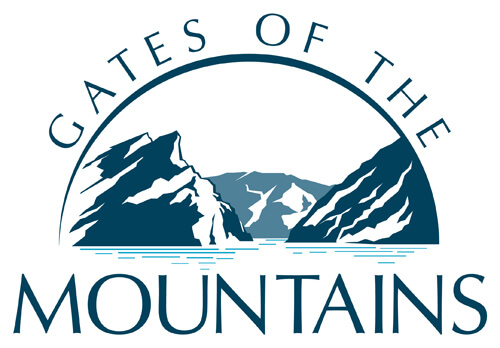History at the Gates of the Mountains
Lewis and Clark
Lewis and Clark Expedition
Friday July 19, 1805, the Lewis and Clark expedition passed through the area naming the canyon the “Gates of the Rocky Mountains”.

“The Journals of the Lewis & Clark Expedition”
(Lewis) Friday July 19, 1805
Volume 4
Gary E. Moulton, Editor
The Musquetoes are very troublesome to us as usual. this morning we set out early and proceeded on very well tho’ the water appears to encrease in volocity as we advance. the current has been strong all day and obstructed with some rapids, tho’ these are but little broken by rocks and are perfectly safe. the river deep and from 100 to 150 yds. wide. i walked along shore today and killed an Antelope. whever we get a view of the lofty summits of the mountains the snow presents itself, altho’ we are almost suffocated in this confined vally with heat. the pine cedar and balsum fir grow on the mountains in irregular assemleages or spots mostly high up on their sides and summits.this evening we entered much the most remarkable clifts that we have yet seen.
These clifts rise from the waters edge on either side perpendicularly to the hight of 1200 feet. every object here wears a dark and gloomy aspect. the tow(er)ing and projecting rocks in many places seem ready to tumble on us. the river appears to have forced it’s way through this immence body of solid rock for the distance of 5 ¾ miles and where it makes it’s exit below has thrown on either side vast collumns of rocks mountains high. the river appears to have woarn a passage just the width of it’s channel or 150 yds. it is deep from side to side nor is ther in the 1st 3 miles of this distance a spot except one of a few yards in extent on which a man could rest the soal of his foot. several fine springs burst out at the waters edge from the interstices of the rocks. it happens fortunately that altho’ the current is strong it is not so much so but what it may be overcome with the oars for there is hear no possibility of using the cord or Setting pole. it was late in the evening before I entered this place and was obliged to continue my rout untill sometime after dark before I found a place suffieciently large to encamp my small party; at length such an one occurred on the lard. side where we found plenty of lightwood and pichpine. this rock is a black grannite below and appears to be of a much lighter colour above and from the fragments I take it to be flint of a yelloish brown and light creemcolourd yellow.— from the singular appearance of this place I called it the gates of the rocky mountains.

